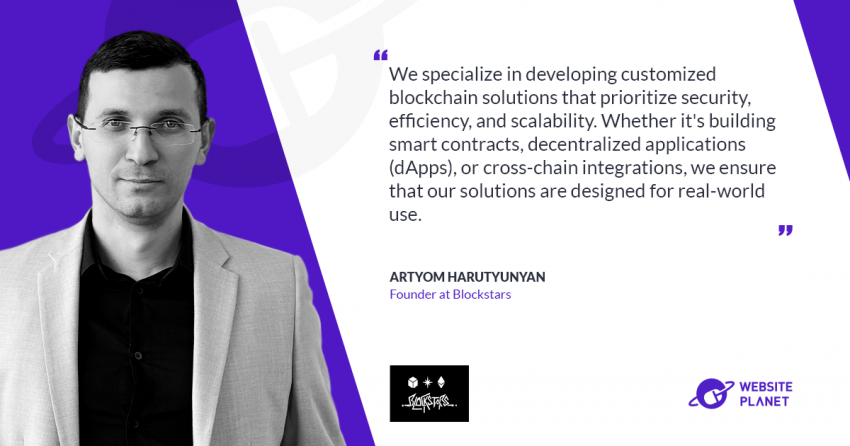Roberto Popolizio sat down with Jiri Knesl, CEO and founder of
Flexiana, where they discussed how the company has reached where it is today, and what’s in the pipeline for the future. Aspiring developers should take note of his list of programming techstack, and check if these items are included in the curriculum of their l
earning platform.
Please present Flexiana to our audience. What services do you offer?
Most often, Flexiana develops digital products and services. Most of that is in the B2B space in a programming language called Clojure. Over the years, we have got a chance to dip our toes in many related activities including service design, UI, UX design, testing, product management.
Recently, we have also started building our own products which led us to hiring skilled people who can do market research and product idea validation.
What is your story and mission?
Before Flexiana I was a software developer, software architect, CTO of multiple startups. On top of that, I was helping other companies and teams to implement many best practices in software development, IT management, agile development, clean code, etc.
About 10 years ago, I found Clojure and fell in love with the language. So I started doing freelancing work even when I had another running business (which wasn’t scalable but was giving me and my family a stable and comfortable income).
After all my life in the SW field and with consulting experience with more than 50 development teams, I knew what works and what does not.
Seven years ago I started Flexiana as an embodiment of all good things I believed should be a part of high quality software delivery.
So we are focused on clean code, autonomy of teams (teams own their methodology, self-organize, have no team leads), agility (Flexiana is named after flexibility, one of values of agility), valuing high quality (we have absolutely no limits on testing and refactoring), helping others, ongoing learning (our learning spending is about $1,000,000 per year), being close to customers, doing great design that is usable and works well also outside the screen.
What problems are affecting your customers when they come to you, and what makes them choose you over your competitors?
Well, I think the main things that differentiate us are seniority (average expert in our team has 11 years of professional experience), closeness (we are in Europe and Americas), agility (each team can change their methodology so that we maximize value provided), high quality (as I said before, there are no limits on testing & refactoring, which might make our development a bit more expensive in the beginning but will make it worth it later), great people (we have Zero Toxic People policy), overall great track record and great design (which is common in digital products we build but we design ERPs and admin interfaces too + our design spans into service design too).
What are your agency’s greatest achievements so far?
That’s hard to say.
- We helped maybe 200 people to start working professionally with Clojure.
- We helped our customers who got $2.5B funding in the past 2 years.
- Until COVID, we sustained 100% YoY growth.
- We helped some of our customers to sustain their growth, often in hundreds of percent.
What tools are in your current techstack, and how do you benefit from them?
For programming:
- Clojure
- ClojureScript
- Xiana Framework (our inhouse framework)
- TypeScript
- Node.js
- React.JS
- VueJS
- Next.JS
- Nest.JS
- Postgres
- TailWindCSS
- GitHub & GitHub Actions
- AWS
For design:
- Miro
- Figma
- Framer
- TailWind UI Kit
For research and product idea validation:
- Maze
- Google Analytics
- Kissmetrics
- Usertesting.com
- And others tools to get people to website (like PPC), for getting feedback (like Quora), form builders, landing page builders.
We also use many homemade tools. In fact, these are the main source of ideas for our own startups.
How do these help us?
In programming, there are three technologies I need to discuss.
First Clojure, which I consider the highest level still a practical programming language. Its expressivity is superior to other languages, so we can express many ideas in one line that would be 10 lines in other programming languages. Also, one advantage is that Clojure attracts senior developers.
At the same time, it is impossible to ignore JavaScript. One of the best developers we have in Flexiana are JavaScript devs, and we were very successful in building great teams that use this technology.
Third is Postgres, which isn’t considered cool technology nowadays at all. But after decades of development and millions of deployments Postgres is one of the best tested and well known databases in the World. And it is great no matter if you want just a relational database, graph database, document storage, GIS, full text search, queues, caching you often find out Postgres is good enough, and you don’t need to add more tools and introduce additional complexity. Personally, I consider Postgres to be one of the most underappreciated and under-used technologies in the world of software development.
Speaking of design, one thing that’s great is Miro. It allows us to run various workshops (most often based on The Design Thinking Toolbox book), brainstorming sessions, even sketching screens, flows between them, outlining contents.
Then, we move to Figma, where we do everything from (both low-fidelity and high-fidelity) wireframes to final designs. Even when I also keep Sketch installed (I love access to tools that work offline too), I must say that Figma allows us a very interactive workflow and have all stakeholders onboard.
Recently, we have started working with Framer. Before, we manually ported code from Figma to frontend components and built everything manually. Now, we would like to be able to keep our designers able to update the UI of the applications even when they are being developed.
One thing that’s making us faster is the TailWind UI Kit which has about 1300 components, 30 designs where we got our Team license. We have a Figma file, pre-coded HTML and React code and this makes the whole handover faster. So when the customer lets us choose, we base ERPs and admin interfaces on TailWind UI Kit. We don’t use this for digital products, landing pages and websites, these are always made from scratch. I know this makes it more expensive, but these should be unique and creative.
How do you think AI will impact your industry, and what do you see in the future of your industry?
We have a couple of ideas for generative AI that might help us in web design, documentation, testing. Some of them might become our products, some of them might be something we will pay for. It will definitely raise the bar for development productivity, but I think that’s a good thing. Product research & development should get more productive, not less.
One great example is GitHub Copilot. For repetitive tasks that have been done many times before, there’s no big reason to do them manually over and over. Here, GitHub Copilot can help a lot. A few weeks ago, there was a need to build one small simulation and visualization. Nothing complex. Normally, it would be maybe 30 minutes of development. With Copilot, it was probably less than 5 minutes of work. That’s great.
However, this isn’t going to replace software architecture, and this isn’t going to replace the ability to design data structures, algorithms that are highly specialized or have special insight into the problem domain.
Apart from AI, I believe that product research, better communication, and understanding of users is something that has a huge potential leverage and still isn’t perfect. And if we speak about apps we build (at least man-years, but go to hundreds of man-years of work), misunderstandings of users’ needs can be costly and damaging.
At the same time, when I studied CompSci, our focus was on systems and users were seen as something behind the border of the system. This must change. Users should be in the centre of each analysis when you design any system. I think this will be one of the main shifts in the software development industry.
Lastly, what about your future? What’s in Flexiana’s roadmap?
In May we will be releasing a batch of our products. We are growing a team of experts who can validate product ideas, market products, and build startups. So we are definitely shifting our focus from being just a development company to a house that can start with one line problem description and end up with a profitable company solving a real problem for real customers.














